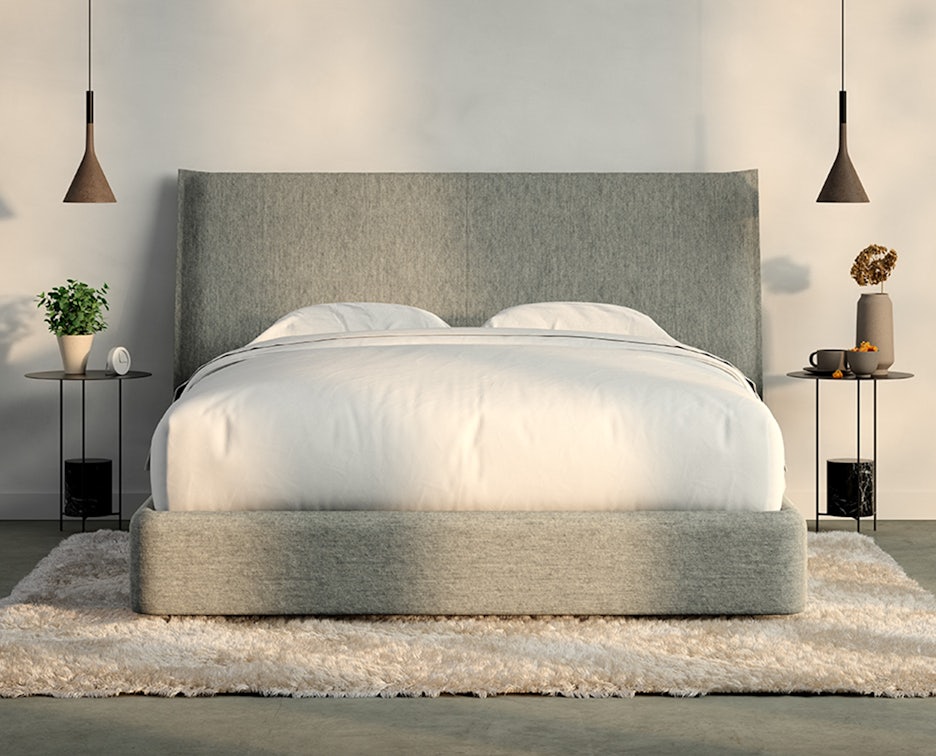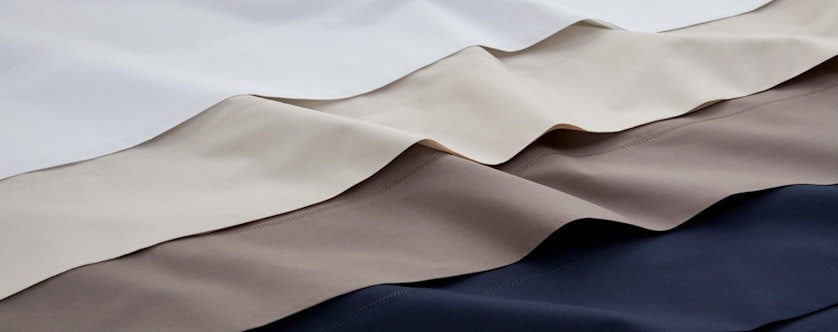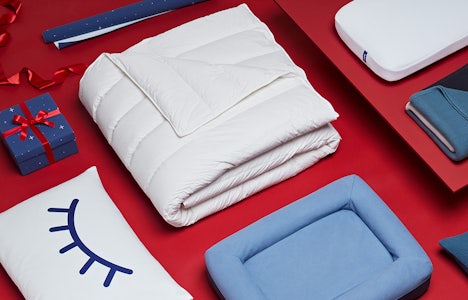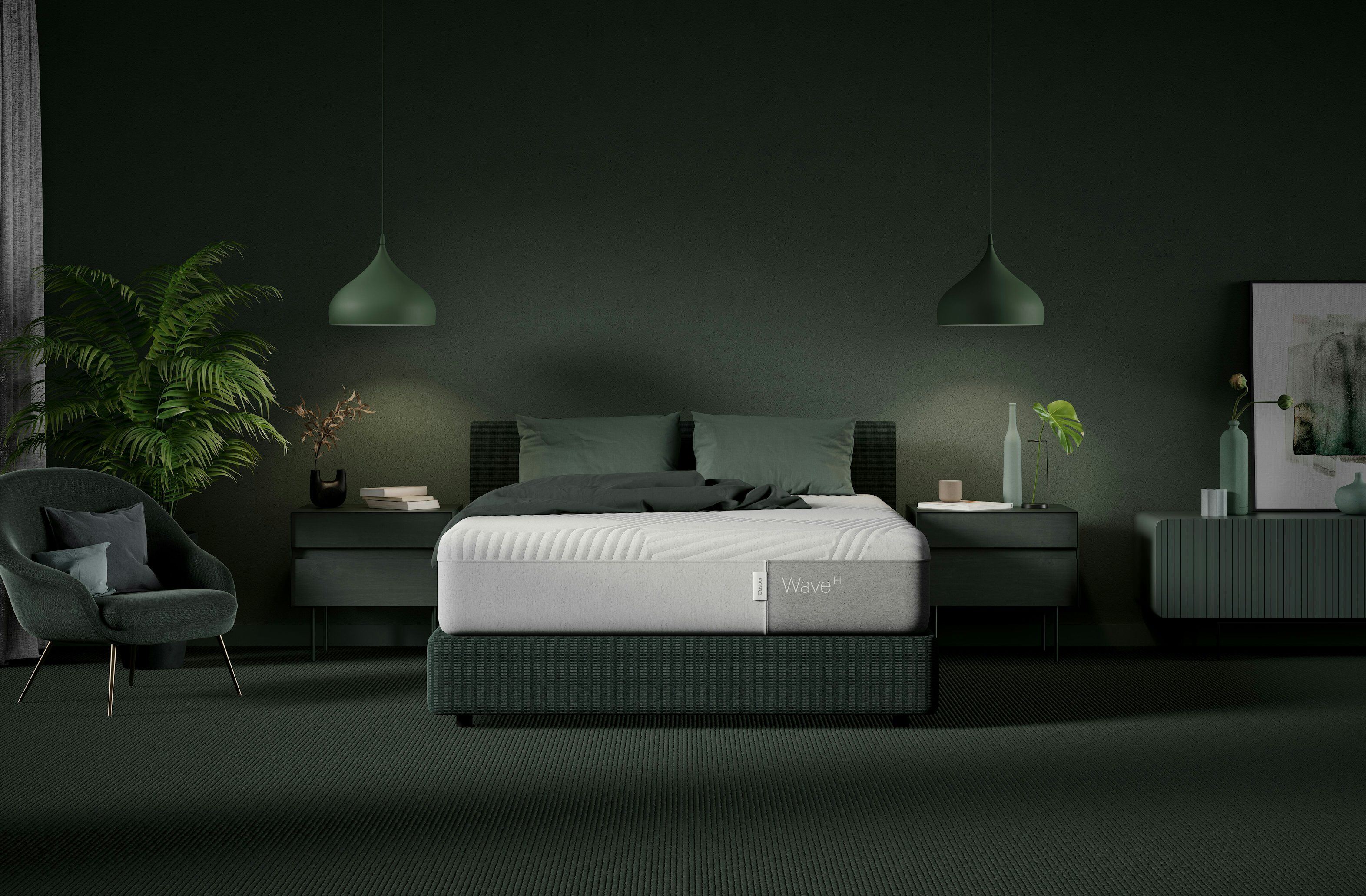
How to Clean a Mattress:
8 Steps
3/4/2020 | Casper Editorial Team
Over time, mattresses can accumulate a variety of unwanted guests including dead skin, dust, dirt, and more. Given we spend about one-third of our lives in bed, it’s important to keep our mattress healthy and clean.
Below are the steps we recommend for cleaning your mattress thoroughly. We also include tips on how to get stains out and keep things smelling fresh. Your mattress will most likely need to dry overnight, so plan accordingly.
Step 1: Gather Your Supplies
First and foremost you will need to gather the supplies needed to clean your mattress. Most of the supplies are items you can find in your home.

In order to clean your mattress, you will need a heavy-duty spray bottle, baking soda, hydrogen peroxide, rags, laundry detergent, and a vacuum (handheld works the best).
Step 3: Vacuum the Mattress
Grab your vacuum (a handheld one works the best) and attach the upholstery attachment. Go over the entire surface of your mattress, making sure to get the crevices, sides, and seams. Vacuuming your mattress won’t remove any stains, but it will remove any external dust and debris.
Step 4: Spot-Clean Mattress Stains
Mattresses are an investment and they’re personal, so it can be frustrating when you notice any stains. In order to spot-clean mattress stains, you will need a stain remover. The type of stain remover you use will depend on the type of stain. However, for sweat, vomit, blood, or urine stains, reach for an enzyme-based cleaner.

If you don’t have an enzyme-based cleaner, go the DIY route and make your own at home. To make that solution, use:
You can also add a few drops of essential oil — like lavender and eucalyptus — to help combat any stains that have an odor and leave your mattress feeling fresh. Place your DIY cleaner in a heavy-duty spray bottle and spray all stains generously.
For spills or bedtime accidents, it’s best to spot clean the cover of the affected area as quickly as possible. Using a gentle detergent or stain remover (without bleach) will break down brand new blemishes, but won’t affect the performance of the mattress. To power through deep-set mystery blotches, a laundry brush paired with the cleaner will work wonders.
What Causes Yellow Stains on a Mattress?
The most common causes of yellow stains on a mattress are urine, sweat, food preservatives, and other bodily fluids. Over time, it is natural for mattresses to become a little discolored. To clean sweat and urine from a mattress, you will need to blot the area (don’t scrub!). Then spray a vinegar solution on the stain and let it soak for a minimum of 10–15 minutes. Once the area is soaked, cover up the stain with baking soda and let sit for 8–10 hours. Then, vacuum up the dry baking soda.
Step 5: Sprinkle Baking Soda

Sprinkle a layer of baking soda over your entire mattress and leave for a couple of hours. The longer you can leave it on, the better. The baking soda helps to break down acid and absorb excess liquids and odors. If you have any essential oils leftover from your DIY cleaner, add them to the baking soda before you layer it on. This will add a fresh, clean scent.
Step 6: Vacuum Again
Once the baking soda has done its job, thoroughly vacuum up the excess. A cordless hand vacuum cleaner works the best. However, you can also use a broom (the clean up will just be a little messier).
Step 7: Air Out Your Mattress
Let the mattress dry for about 8–10 hours. If you need it that night you can put a fan on it or put it outside to speed up the drying process.
Step 8: Flip the Mattress and Repeat

Now that you’ve cleaned one side, it’s time to do the other. Flip your mattress and repeat steps 1–8 and you’ll have a perfectly clean mattress.
A good rule of thumb is to flip your mattress every three months to prevent sagging. However, if you have a Casper mattress, you don’t need to flip it. If you sleep on one side of the bed or sleep with a partner that is significantly heavier than you, then you should rotate the bed 180 degrees every 3-6 months.
How to Clean a Memory Foam Mattress
When cleaning a memory foam mattress, the steps are generally the same. The main difference is the drying process. Memory foam mattresses are like sponges so they absorb moisture quickly and dry slowly. When drying your memory foam mattress, use a hairdryer on low heat or a small fan to speed up the drying process.
For memory foam pillows, fill up a sink or bathtub with water and add a small amount of a gentle laundry detergent. Memory foam should never go in the washer or dryer. Add your pillow to the water and squeeze it a couple of times to allow the water to absorb into the pillow. Then, squeeze your pillow (don’t twist!) to remove any excess water. Leave to air dry outside or by a fan. You can spot clean any stains on a pillow the same way you would a mattress.
Tips for Keeping Your Mattress Clean

Experts recommend replacing your mattress every 10 years. To keep your mattress in tip-top shape during that time while getting as much beauty sleep as you can out of it, we’ve rounded up some of our favorite tips for keeping your mattress clean.
Use Protection
Using a waterproof mattress protector is a no-brainer to guard against dirt, spills, and normal wear and tear. We developed a waterproof mattress protector that conforms through the sides and keeps it pristine. The best part? It won’t compromise the comfort of your bed.
Give It a Bath
While we don’t recommend trying to wash it yourself, there are plenty of professionals out there who can get the job done. We recommend contacting your local mattress cleaning service and scheduling a convenient home visit.
Keep It Smelling Fresh
To keep odors in check, air out the mattress by freeing it from the sheets and opening a few windows. For serious smell situations, consider sprinkling baking soda on the cover, then vacuuming it away before putting the sheets back on.
Keep Out Dust with Fitted Sheets
Use fitted sheets to protect your mattress from dust, dirt, and dead skin. This will help keep your allergies at bay and ensure that dust mites don’t find a new home.
Rotate Your Mattress
Along with regular cleaning, you can periodically rotate your mattress head-to-foot (180°) every six months to make sure it wears evenly, but don’t ever flip a Casper mattress. The Casper mattress is strategically layered for your comfort so it doesn’t need to be flipped.
Also, the right setup can make a huge impact on a bed’s lifespan. You’ll find that the type of support that sits under your mattress is just as important as the different layers of materials. We recommend using the Casper foundation and metal bed frame. For more information on the ideal setup, see this FAQ.
A quality mattress is an investment and protecting your mattress is critical to getting the most out of it. Cleaning your mattress regularly will extend its life and ensure it stays comfortable. However, all good things must come to an end. After 8–10 years, it’s time to invest in a new mattress.
Make sure you find a mattress that suits your specific needs. At Casper, we are dedicated to designing mattresses that keep you cool, comfortable, and cradled all night long.







